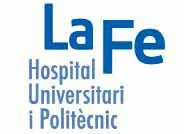HealthManagement, Volume 7 - Issue 1, 2012 HIT
"La Fe" in Valencia, Spain-Mobility System to Guarantee Clinical Safety and Optimise Beside Processes,Saving Cost.
This specialty care centre is part of the Spanish public hospital network, with 1,300 beds, 39 operating rooms and more than 4,000 patients/day. Taking advantage of relocating to a new hospital, an innovative RFID and Wi-Fi system has been implemented to guarantee clinical safety and provide identification, location and tracking of patients and assets in real time. The project started in March 2011 and has been developed in three phases: "Opening, Adjustment and Full-Implementation"
The importance lies in the autonomy offered for nursing carts, allowing the automatic secure identification of patient bedside, obtaining and including all data on its clinical records in real time, as well as patient and asset location and traceability.
This project saves time on daily tasks that do not add value, minimises errors, saves cost, collects data automatically and is integrated with the Hospital Information System. 82 mobile units (nursing carts) include ZigBee technology (2,4GHz) for 823 hospitalisation beds to provide automatic patient identification, integrated with bedside clinical processes. Each patient wears a bracelet, providing unique identification to the system in real time (every 1.5 seconds), locating and tracking them. Vital sign monitor, electrocardiograph and other devices are integrated with secure identification and hospital information system.
The project’s implementation was not without difficulties: The adjustment period to new infrastructure and the training of professionals on new technology (considering average age of 52 years old) took some time.
The mobility system is successfully installed in 100 percent of the hospitalisation units providing secure identification, location and tracking of 80 percent of patients per day in real time. Aspects like communication infrastructure and integration are currently being finished (80 percent completed). 100 percent of professionals and new staff received training in three months and the technology is already incorporated in the daily work.
The future impact of the project is improvement on clinical safety and return on investment, saving time and resources.








